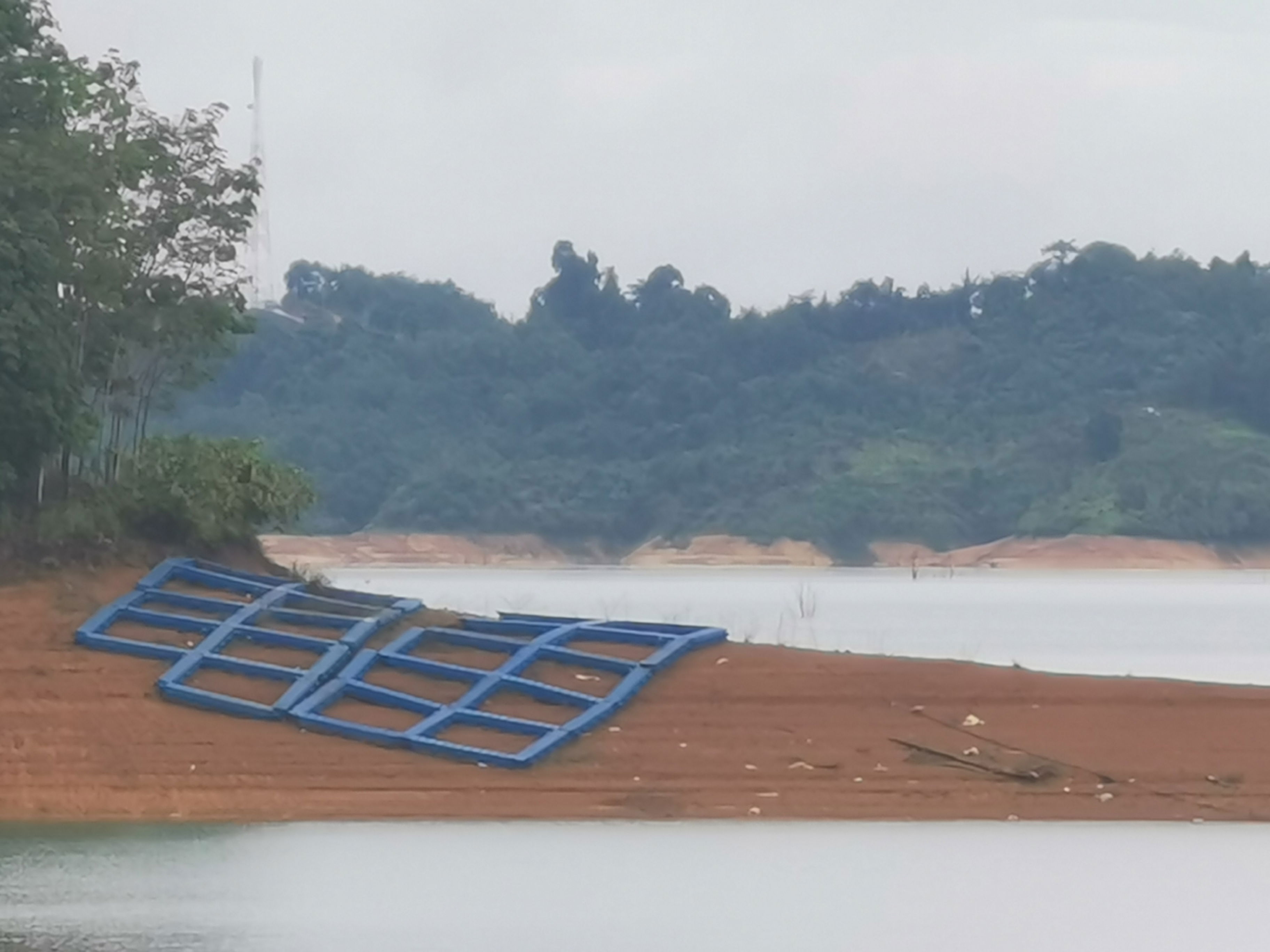Batang Ai National Park (3 – 5 October 2025)
Why Batang Ai National Park?
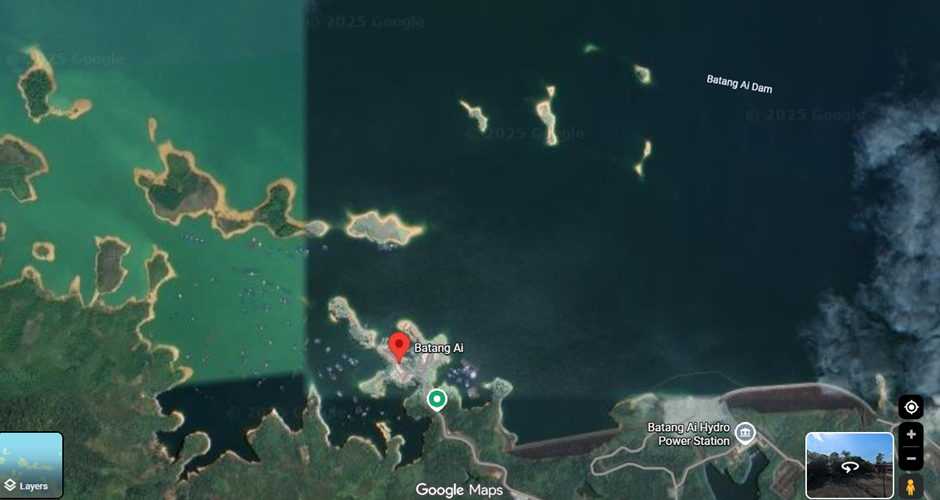
Most people heard of Batang Ai hydroelectric dam, Sarawak’s largest manmade lake. Most people tasted Tilapia fish from Batang Ai too. Yet, not as many people know, further upriver from the lake/ dam is a national park, known as Batang Ai National Park.
When you have the momentum, keep it going. That’s exactly what I thought. Following our trip to Maludam on the 31 August, I just thought it is best to keep the momentum going, and visit to another national park within the span of several weeks.
The trip was made easy, as Calvin, one of WeMAL staff has some relatives in Kampong Beretik Baru at Lubok Antu area. They were originally from the old Kampong Beretik that is mostly submerge in the water now, as part of the scheme of Batang Ai hydroelectric dam.
The trip highlights
The night before
We were supposed to leave office at 1pm on Friday (3 October 2025). Yet, the departure was delayed by few ad hoc client meetings. By the time we left office, it was already nearly 5pm, and we were caught in the heavy traffic enroute to Serian. From Serian onward, the traffic was smooth. After a quick dinner at Simanggang area, we continued our drive toward the Batang Ai.
We were greeted by Calvin’s future in law family at Kampong Beretik Baru long house, somewhere 20 minutes away from Batang Ai hydroelectric dam. Though we have taken our dinner, we didn’t decline when Calvin’s in law family offered us food and drink. As we enjoyed the meal, we chatted about what we would be able to find later tomorrow. When I asked about the Tilapia farm and floating house, Calvin’s father in law was quick to share that they own one in Batang Ai dam too, as part of the government program to develop more agriculture entrepreneur. Asked if he still operate it, he murmured “Tidak lagi. Sudah bankrap” (no longer operate it, went broke already)
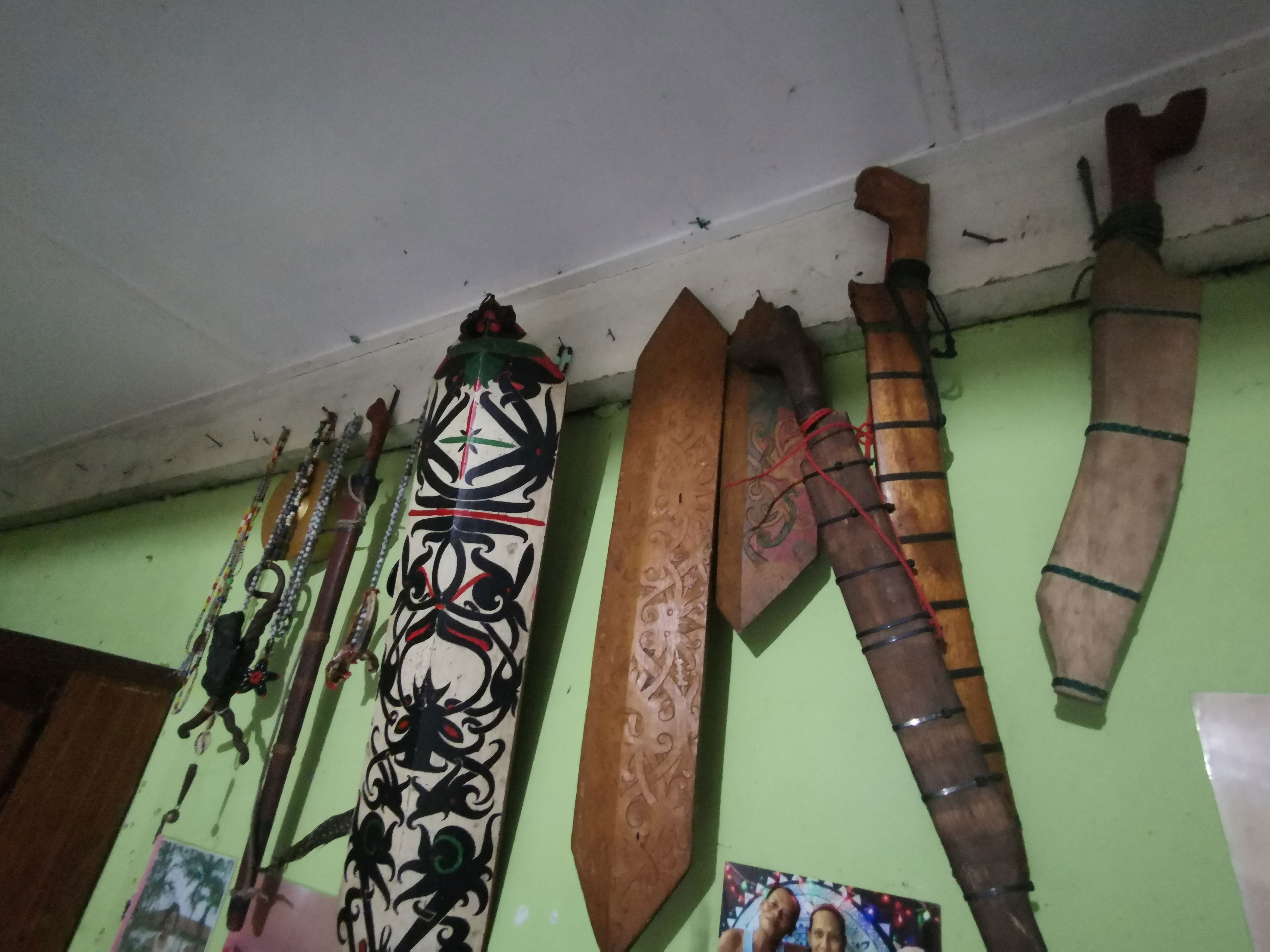
The day we entered Batang Ai national park
After a good sleep in the living hall area, we woke up early preparing for the adventure. However, rain continued to fall from mid night until the morning. It was until 8am that the rain finally stopped. The boatman quickly bought a jerry can of gasoline for the engine.



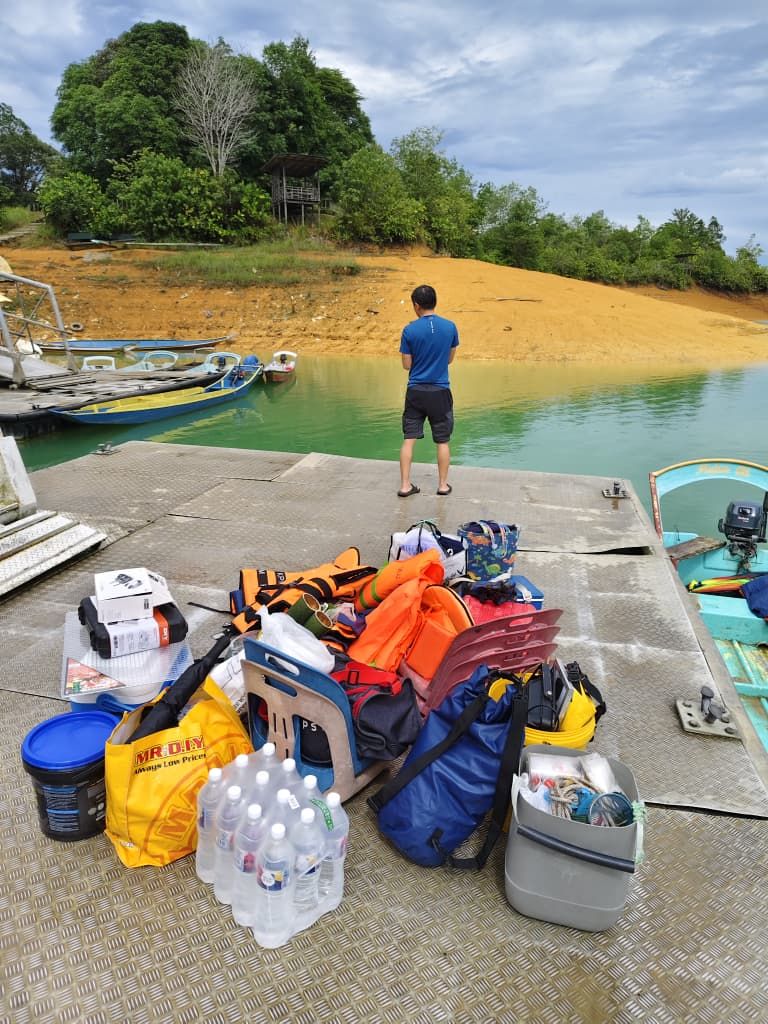
The boat engine stalled, with lot of white smoke coming out. We have no choice but to paddle our way back to the shore. We were lucky that the engine failed when we were only 2-3 minutes departing from the jetty. We paddled our way back to the nearby jetty again. The boatman brought the second engine. After testing it carefully, we began our journey again.
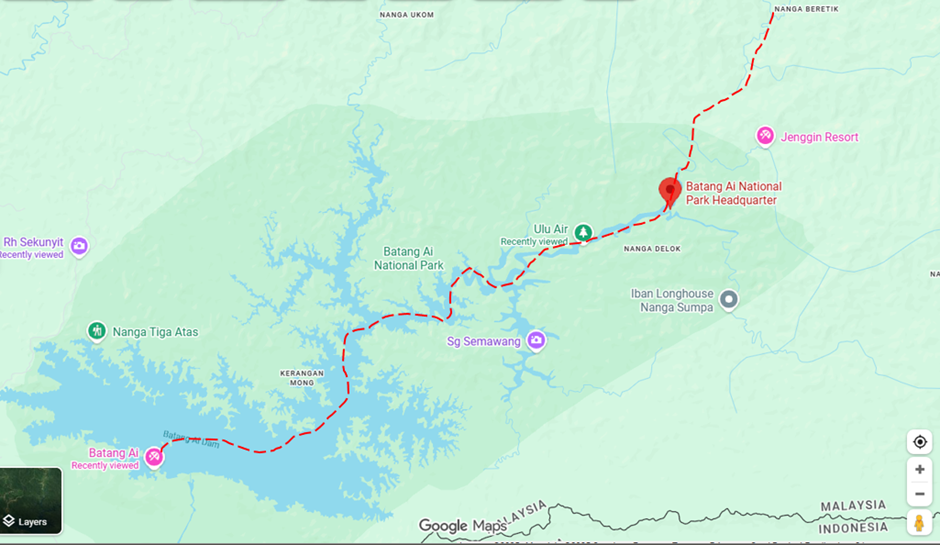
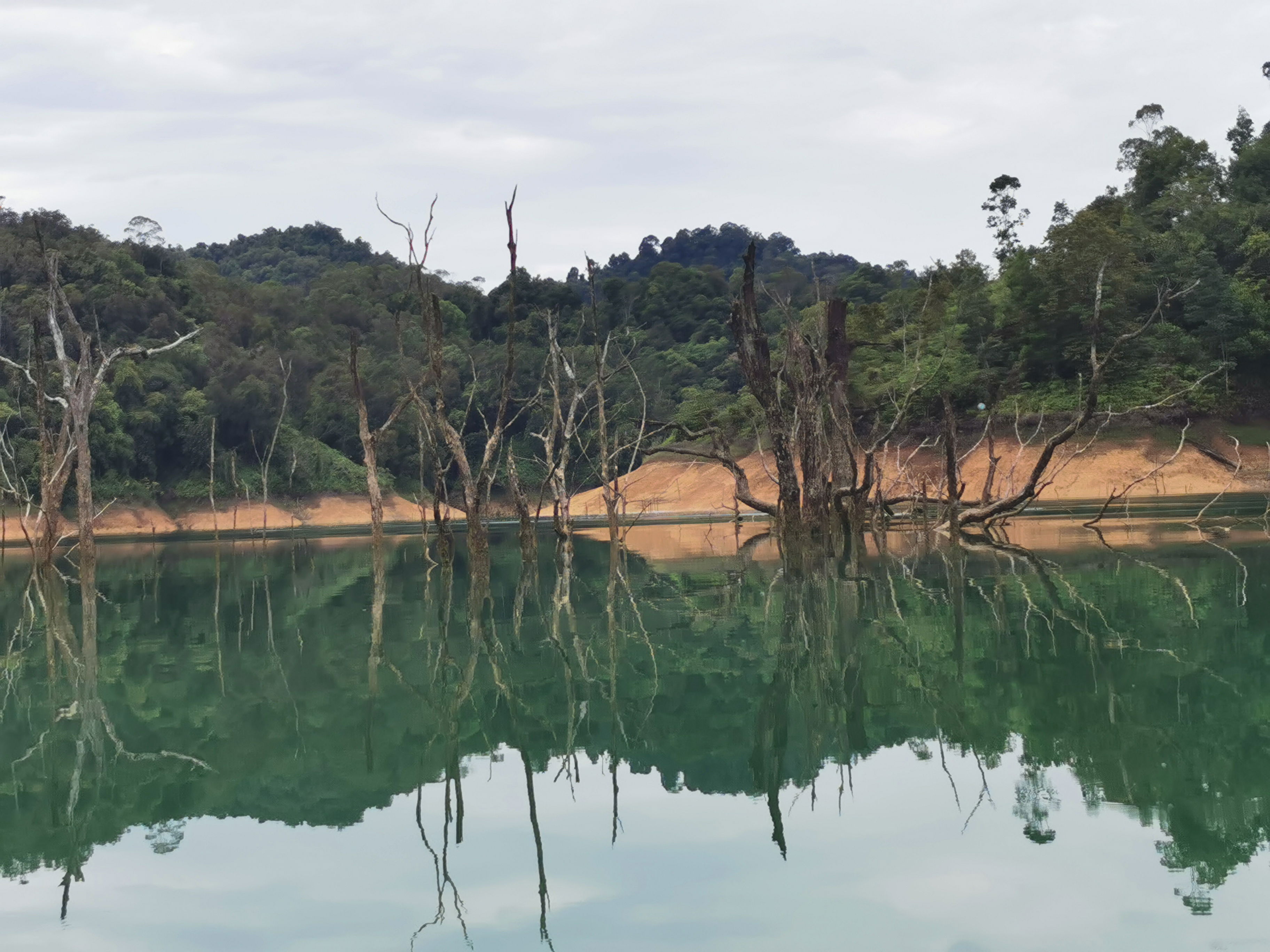
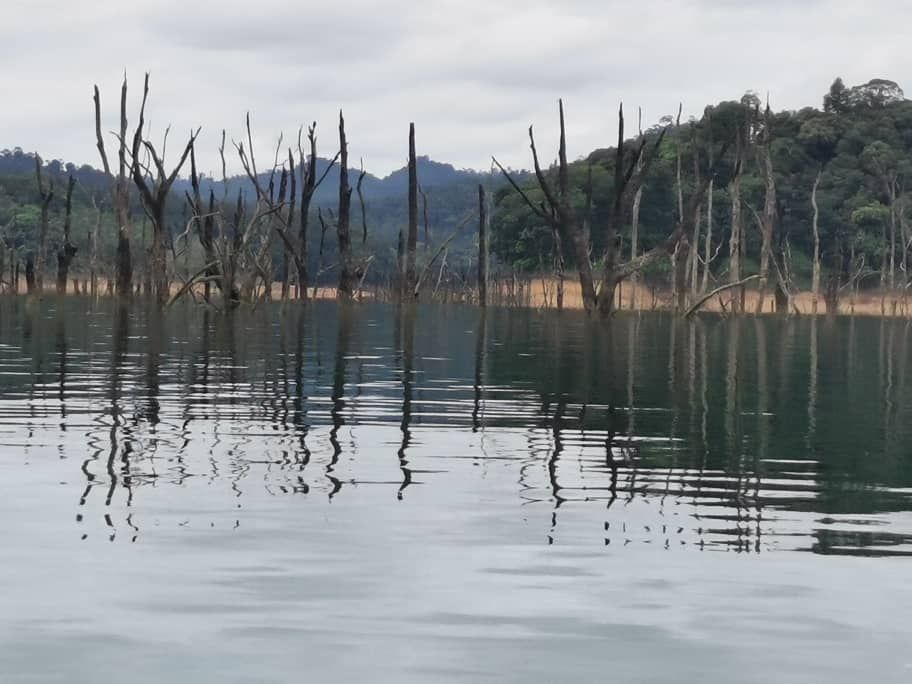
The dam is huge and the water is deep. Green color, turquoise blue before we entered the small river stream leading to the upriver. Before we made our way to the river stream, we passed by the new Batang Ai National Park Headquarter.
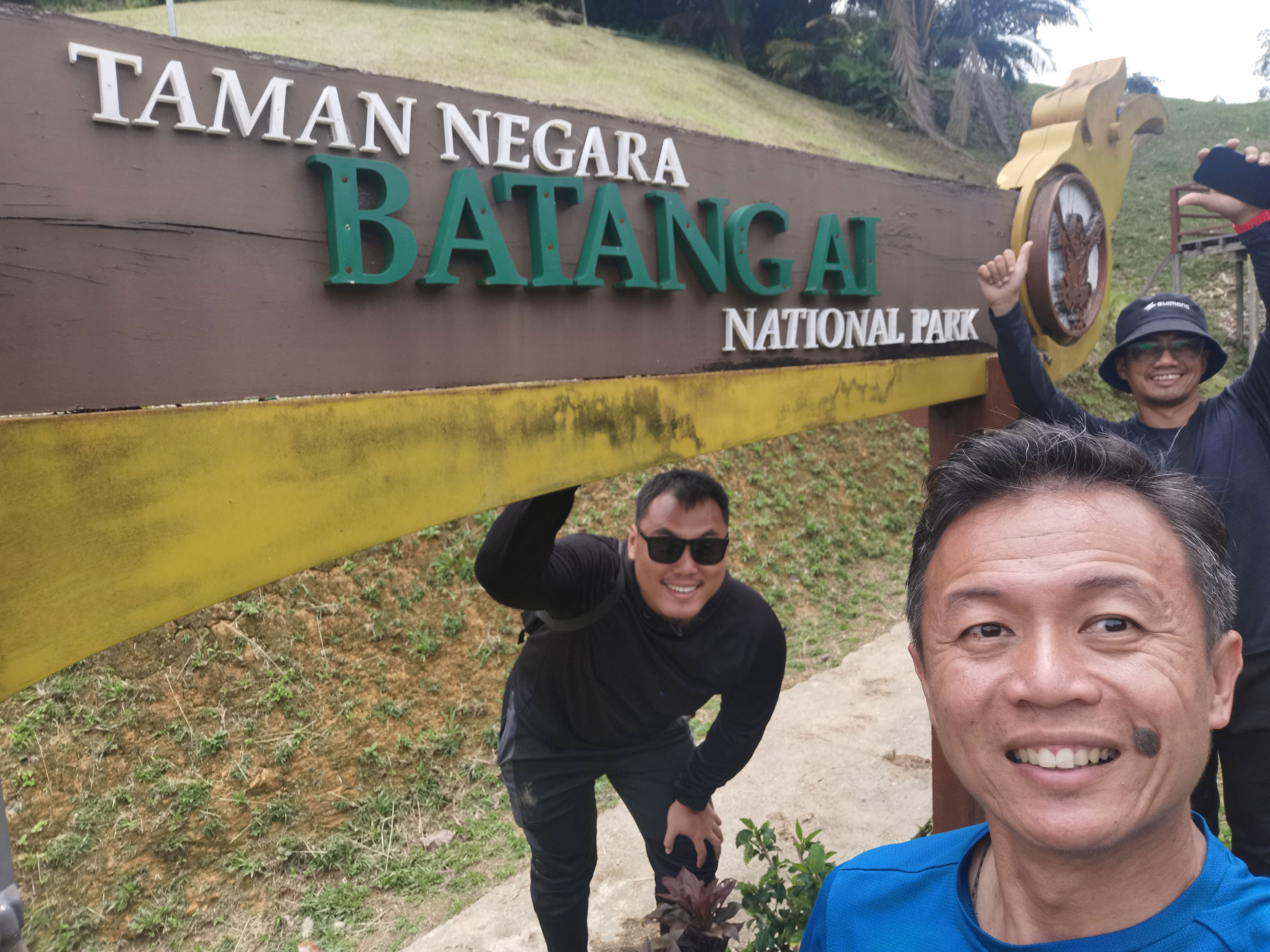


After a short troll and registration, we continued our way up. It took us 1.5 hours to reach the wooden hut built by Calvin’s in law at the river bank. We moved all our supplies and goods from the boat to the wooden hut, ready ourselves for the 1 day – 1 night stay here. The hut was built recently. There is a HDPE hose, channelling water from the hill to the wooden hut. There is also a very simple standalone toilet behind the wooden hut, where I have no idea where the WC is connected to. Besides, the water supply only reaches the wooden hut, and not the toilet.


After placing all our goods, I saw Calvin’s father-in-law, moving swiftly through the bushes, and the next thing I knew, he was back with some woods. I am truly amazed with how he can make wonder by only using his parang knife. “Chop”, “Chop”, “Chop”, and big piece of wood was chopped into many small pieces. Next thing he did, he took out a small plastic bag of smashed palm fruits. He lit up few pieces of palm fruits, and started the fire to burn those collected woods, turning them into charcoal. This woods turned charcoals were good enough to keep the heat from afternoon 4pm until the night 9pm, allowing us to barbequed for hours.

Dominic, a WeMAL staff who coordinated this trip, decided to fly my drone to catch some good aerial footage of this serene scene. 2 minutes into the fly, I heard him shouting “Oh Shit, Oh Shit and Oh Shit”. The next thing I saw, the drone lost control and hit into a tree across the river, and dropped into the river with rapid stream. Not wanting to make him feel bad, I just assured him “it is ok, I can get a new unit soon”. Deep inside, I was thinking “shit, here goes my RM2.5K”. We didn’t attempt to cross the river to look for the drone, as I know even if we are able to retrieve the drone, the repair cost would probably cost the same as new drone. Besides, the stream was rapid, and it was too risky to cross it. Sometimes, we need to have some regrets in our journey, so that we have reasons to return to the place again.
At late noon, the boat man brought us towards downriver and caught some fish using net. Back from the fish catching, we took our shower in the cold river as the stream turned less rapid. In the evening, our boat man started the small generator, powering up the wooden hut lights. There was a lot of BBQ food, instant mees and beers to spend the night with. Around 9pm, we called it a night, all 7 of us occupying space in the open wooden hut, and dozed off.
The 2nd day in Batang Ai national park
I ready myself early. Silly it may sound, I saw outside the wooden hut and tried my best to breath deeply, hoping to suck in as much fresh air as possible. When Calvin’s father-in-law and fiancé finally woke up, they shared with me that across the river, there used to be some orangutans there. But the orangutans were eventually trapped and relocated to Semangoh, as a preventive measure to save them from poaching. When all of us were ready, we went further up river. We passed by the original Kampong Beretik, where the wooden signboard still stand firm there.
We finally reached the upriver Batang Ai National Park office. This office was manned mainly by locally hired rangers, who understand the culture and customary laws here well, who knows the local community well. After taking a few photos, I grabbed the opportunity to use the toilets in the office compound. It is such a luxury to be able to use a toilet with proper water supply in this national park area.
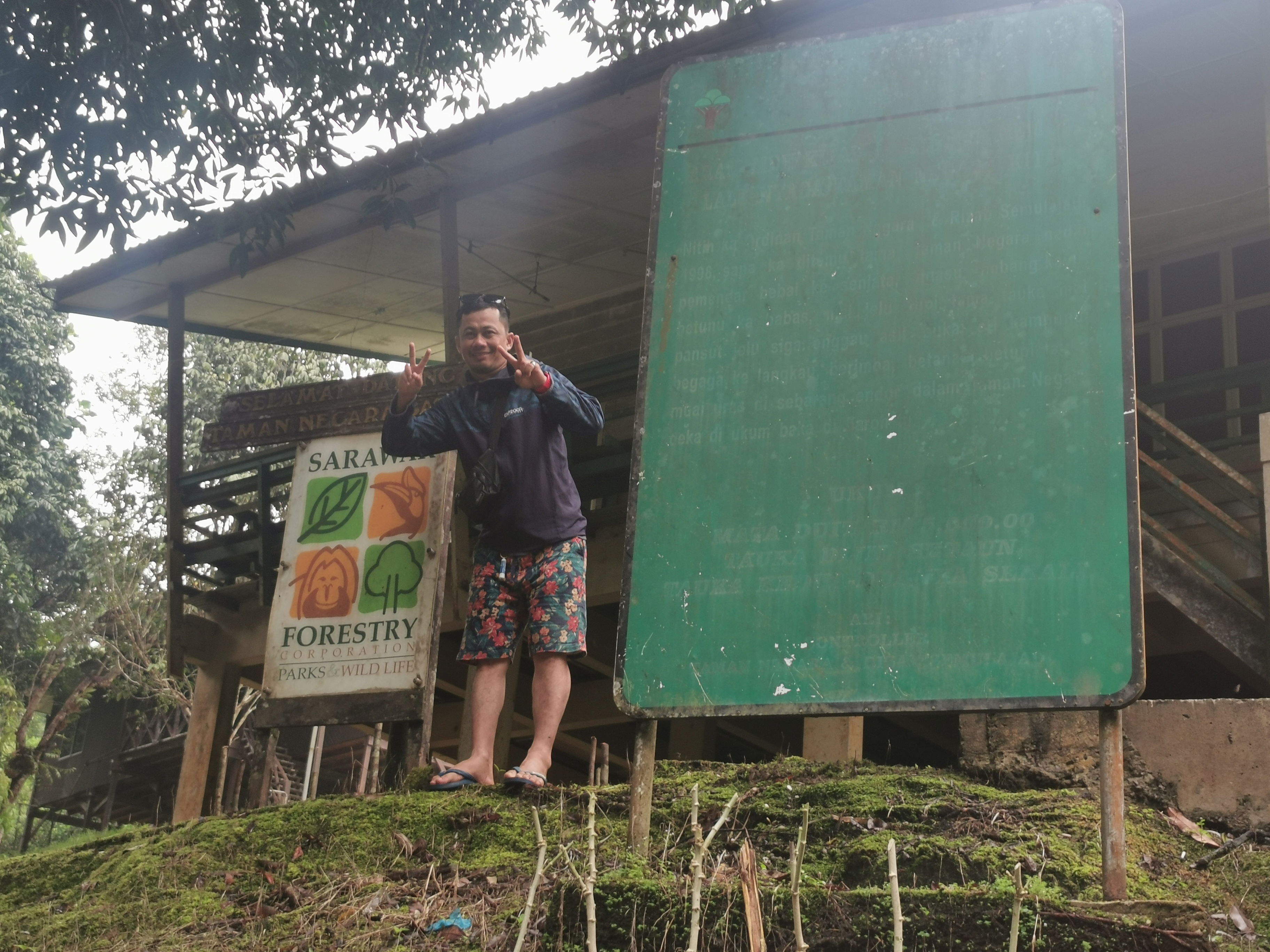
By around 10, we made our way back to the jetty. Before we reached jetty, we stopped by 2 important places (1) The once glorious Batang Ai Resort (2) Calvin’s in law Tilapia floating house and cage farm.
- The Batang Ai resort is a unique resort, made all by wood. However, COVID has forced this place to go into insolvency. The place is now known as one of the very haunted places. There were many versions of stories. One thing is common, most of the local community believes in the place being haunted.

- Calvin’s in law Tilapia floating house and cage farm – it was an abandoned facilities. Abandoned after the first harvest, because they do not have sufficient fund to replenish the fish fry. It is such a waste of potential, knowing that Batang Ai lake has produced a lot of high quality fresh produces from the fish farming industry.
After taking our lunch at Lubok Antu town, we made our ways back to Kuching with full of learnings and memories.
My transports, accommodation, and F&B
- Own drive from Kuching to Lubok Antu. And from the Batang Ai dam, it was all the way by a single engine long wooden sampan
- Accommodation: Kampong Beretik Baru for the 1st night, and a wooden house near Kampong Beretik Asal in Batang Ai National Park area.
- Boat: RM600 + Tekong: RM200
It was a trip that worths every penny. We got to stay for free at Kampong Beretik Baru and also the wooden house in the Batang AI National park area, as Calvin’s in law own those houses. On top of the accommodation, Calvin’s in law has shown us the greatest hospitality services too, preparing foods for us.
My 3 Plus and 2 Minus :-
3 things I like about this trip:
- Seeing by myself, the oldest dam in Sarawak – Batang Ai Hydroelectric Dam. Not only it stands strong against the test of time, it has evolved too. Now, it is also the address for the Malaysia’s largest floating solar farm. Not only that, I have seen by myself too, how the government has provided assistance and grant to help the local to build Tilapia floating cage and house.
- Understand how people still trace back to their roots, how the local Iban still hope to rebuild their “Kampong” at the original location, and perhaps turning these “kampong” into their weekend retreat house, or even a nature-tourism home stay.
- The respect the National Park has for the local folks who were originally the settlers in the national park area. Not only so, they also allow the original settlers to rebuild their Kampong within the national park area. It is unbelievable to see National Park and Kampong rebuilding can co-exist harmoniously.
2 thing I would do differently if I can turn back the clock:
- Remind my staff to turn of the GPS function when he flies my drone in the future. ☹
- Go further upriver and perhaps put up a night at one of the floating house of Tilapia Farm at the lake area
A surprise learning from the trip
- Many tilapia floating cages and houses were abandoned by the local folks after 1 time of harvesting. Reason? They didn’t manage the cash flow. As much as assistance and grant were given, if the financial literacy is not improved, most of the assistance is just like “giving them a fish”. Perhaps it is time for the government to think of how to improve the local folk’s financial literacy and financial discipline, to teach them how to sustain the assistance given.
- When there was no cellular signal , I got anxious at the beginning. Yet, after a while, I started to settle into a very calm and relax mode. I no longer check my phone knowing that there is no way a WhatsApp or a call would come in. Perhaps it is time to rethink, how I should cut off my cellular and internet connectivity once in a while, so that I can start to live in a moment, and put aside the chronic unease of the potential incoming call/ messages.
- Learning from Calvin’s fiancé, some of the Orangutans in Semengoh were originally from the rain forest of Batang Ai. I did some reading in the internet to validate this. As I researched deeper, I can’t help but to think, while the forestry did their best to protect the species, to relocate them etc, many orangutans still lost their habitats over the last 20-30 years, as their homes were made way for medium- large scale Palm Oil Plantation. It was an open secret, many of the medium size, privately own palm oil estates are registered as NCR land in both Sabah and Sarawak. As much as the Land code recognize and protect the right of indigenous communities to occupy such NCR land, how do we strike a balance with nature need, and minimize the abuse of loop holes? How could some local folks own thousand acres of NCR land at different areas, and yet still claiming that these lands were occupied and used by them or their ancestors since long time ago? How human greed affects planet earth. Do we really need that much of wealth to live comfortably?
